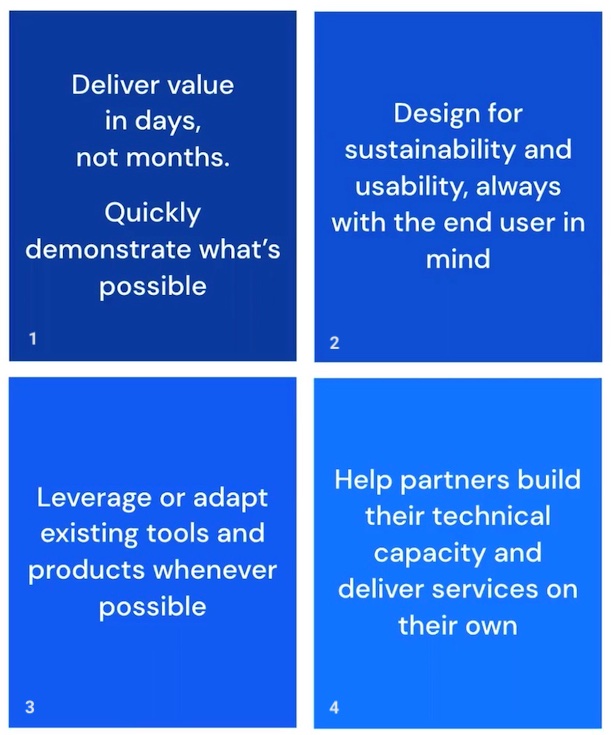
Earlier this month, I talked about how working at nonprofits that produced live theater taught me oh-so-much about effective management and internal communications and continuous improvement. In this blog, I’m going to focus on what that experience taught me about managing and leveraging customer data.
Back in the 1980s, professional nonprofit theaters had already mastered customer data management: such was fundamental to their cultivating recognition and value in their communities, support that translated regularly into donations. And regular donations mean an organization is sustainable – it means it’s not completely reliant on an angel donor, which is fine until that angel donor dies or gets bought out by a company with no interest being an angel donor.
Most of these nonprofits used a program called ArtSoft to manage data regarding their audience, both program attendees and donors. ArtSoft dominated the market for managing customer and donor data at nonprofits that were focused on live performance. Back then, it felt like every theater, every dance company, every performing arts center used it. It’s sad that it doesn’t have even a Wikipedia entry – it deserves such.
But it wasn’t the software that mattered: it was the human protocols and processes in place to ensure audience member information was regularly gathered and updated. At any theater I worked in the 80s or 90s, there were protocols in place so that every single ticket buyer, every season ticket buyer, every special event attendee, every class participant, every donor and every volunteer went immediately into the master database system, ArtSoft or not, at the moment they paid money or signed up for any activities. And each person – each entry – was tracked regarding their relationship with the organization and their activities from then on.
The goal of this data tracking? To communicate with the people in the database such that:
- season ticket buyers came back year after year,
- single ticket buyers either became season ticket buyers or kept coming back as single ticket buyers
- that people that purchased tickets to events or classes were encouraged to buy tickets to stage shows
- that everyone was encouraged to donate financially, annually, to the organization
- that volunteers were encouraged to do any of the above, and that any of these audiences were encouraged to volunteer
35 years ago, these arts organizations were already experienced in target marketing in a way that I feel like so many nonprofits now, particularly those started by corporate folks, are still learning.
Those arts organizations had a relationship with every person in that database, everyone of a few thousand people. The organizations could target market to single ticket buyers based on the kinds of shows they liked in the past. We could target market events based on ages. We could engage in highly-targeted correspondence and phone calls that built relationships such that individual donors came back year after year after year. At one theater, we decided to stop trying to convert single ticket buyers to season ticket holders because, reviewing our data, we felt like we had “enough” of the latter, and wanted to still have an avenue to cultivate new customers. These arts organizations were regularly engaged in highly successful, annual crowdfunding – but they didn’t call it that.
These organizations were successful because of the relationship they built and sustained with individual donors, and it was individual donors, not large grants, that provided MOST of their funding.
That was all before “big data.” Those relationships happened because every person that touched that database understood that the people in it were humans, many of whom had emotional moments when they came to performances. They weren’t just a record number – they were real people, and they felt an emotional connection to the theater.
Not because of the software we used, but because of the protocols that were in place, everything about every program participant ended up almost immediately in our master database. How did we do that?! This way: at nonprofit theaters, absolutely everyone in every audience and every program came through the box office staff or the fundraising staff. That’s easier for nonprofits built around attendance to one primary series of events than an organization that has a range of programs each managed by different people. In addition, there was one person whose primary responsibility was to oversee all of the correspondence to everyone in that database, with the goal of either encouraging participation (including buying tickets) or donating money, and that messaging followed a strategy – it wasn’t haphazard.
Absolutely, individual staff sometimes exported certain data and worked with that data on their own. A staff member might have his own volunteer management database with very specific information to track about volunteers, information that should be kept confidential for the rest of the staff. Another staff member might have a database of media contacts with information separate from the main database. But the main database was the MAIN database, a precious asset as important as anything that went on the stage.
One of the many things I learned in working with these databases: you didn’t delete anyone from them. Duplicates, yes, but if someone called and requested to not be on the database anymore, or died, the recorded got marked as such, but not entirely removed, at least not for a certain number of years. Why? Because the data from the precious engagement was still needed for at least five years on, or because of the very real possibility that someone would re-input that person if they weren’t there already, not knowing the person had requested to be removed or had died.
It’s just yet another example of how arts organizations are often so far ahead of supposedly more tech-savvy nonprofits. And how there are lessons from 35 years are still oh-so-relevant.
This experience was the basis of one of the first web pages I created for my new web site back in the 1990s, about how to manage customer databases. And I can still see the influence in these pages on my site:
Keeping Volunteer Information Up-to-Date.
Advice on Choosing Volunteer Management Software.
Basic Customer Database Principles (an updated version of that first advice page on my web site).
Customer Database Regular Maintenance .
Has working in arts-related organizations affected how you work in other environments? Please share how below in the comments.

If you have benefited from this blog, my other blogs, or other parts of my web site and would like to support the time that went into researching information, developing material, preparing articles, updating pages, etc. (I receive no funding for this work), here is how you can help.









